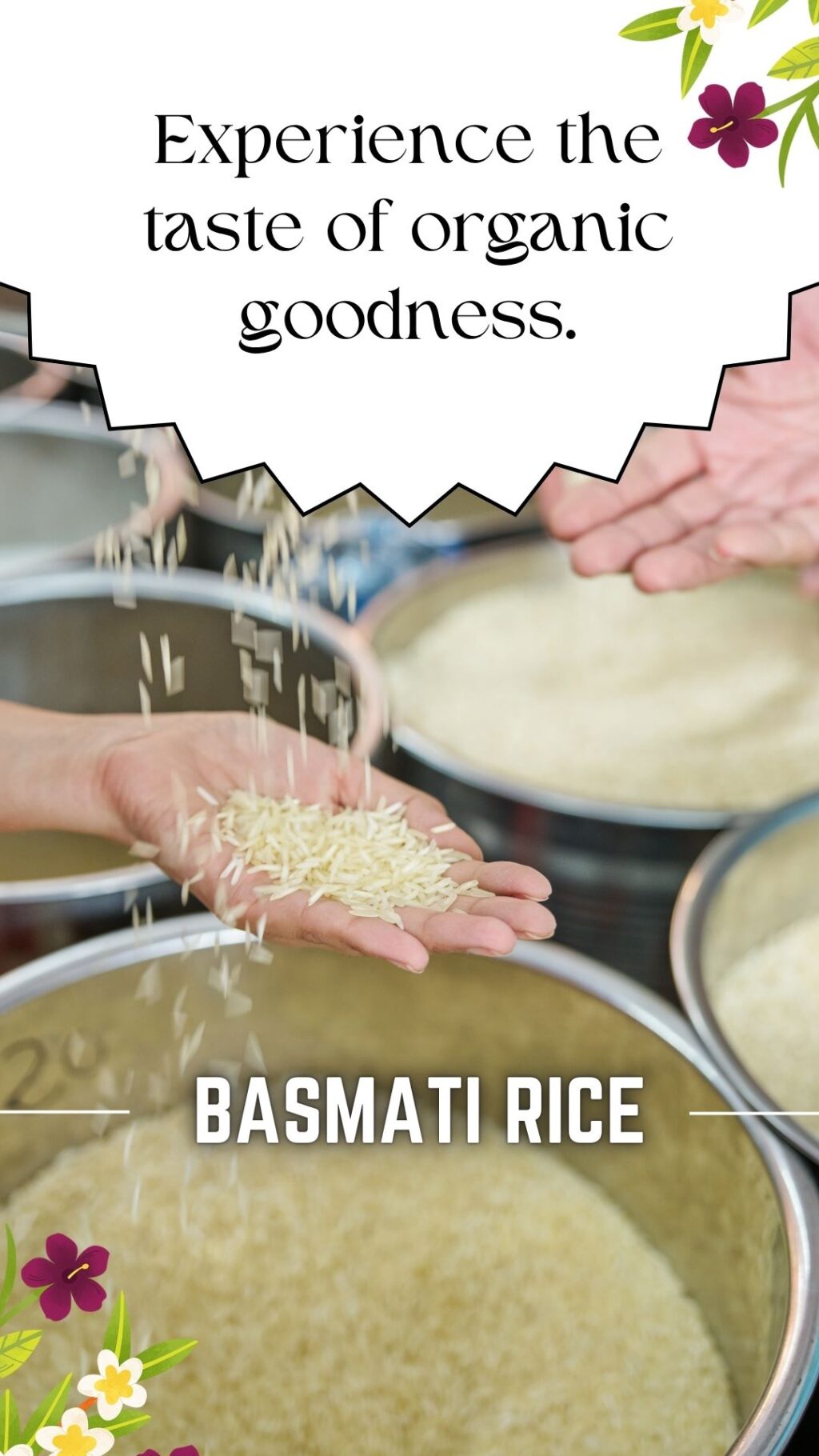
Introduction to Basmati Rice Export Industry
Basmati rice holds a prestigious position in global agriculture due to its unique aroma, long grain, and delicate texture. This special rice is primarily grown in the Indian subcontinent, especially in the fertile plains of northern India. The global demand for Basmati continues to rise, making the role of a basmati rice exporter crucial in connecting Indian farmers to international markets.
Being a basmati rice exporter involves more than just trade. It requires deep agricultural knowledge, supply chain strength, strict quality control, and an understanding of international regulations. The global market sees Basmati rice as a symbol of heritage and purity, which makes consistency in quality and authenticity a top priority for exporters.
India’s Role as a Leading Basmati Rice Exporter
India is the largest producer and exporter of Basmati rice. The fertile lands of Punjab, Haryana, Uttar Pradesh, and parts of Jammu and Kashmir are ideal for cultivating authentic Basmati varieties. Indian exporters have built strong reputations by adhering to traditional farming practices while adopting modern processing technologies.
Over 60% of the world’s Basmati rice exports come from India. Countries in the Middle East, Europe, North America, and Southeast Asia are major importers. This dominance has positioned Indian basmati rice exporter companies at the center of the global rice trade, often setting quality benchmarks that others try to match.
What Sets a Reliable Basmati Rice Exporter Apart
A professional basmati rice exporter is not just a supplier but a curator of quality. The key elements that distinguish reliable exporters include:
- Strict Quality Control: From harvesting to packaging, every step is monitored to ensure the rice meets export-grade standards.
- Modern Milling Infrastructure: Advanced machinery guarantees minimum breakage and consistent grain length.
- Storage and Hygiene: Warehouses are designed to preserve the aroma and freshness of the rice until shipping.
- Global Certifications: Reputed exporters hold certifications such as ISO, HACCP, BRC, and FDA approvals, making their products compliant with global safety standards.
- Sustainability Practices: Many exporters are moving towards eco-friendly packaging and water-efficient farming partnerships with growers.
These practices help exporters maintain long-term relationships with international buyers and expand into newer markets.
Types of Basmati Rice Offered by Exporters
A professional basmati rice exporter generally offers a wide range of Basmati rice to meet diverse market preferences. Common variants include:
- Traditional Basmati Rice: Known for its authentic aroma, long grain, and post-cooking elongation.
- 1121 Basmati Rice: Highly popular due to its extra-long grain and fluffy cooked texture.
- Pusa Basmati Rice: A high-yield hybrid that maintains Basmati characteristics with added resilience.
- Organic Basmati Rice: Cultivated without synthetic pesticides or fertilizers, suitable for health-conscious consumers.
Each variety is offered in different polish levels—raw, steamed, sella (parboiled), and golden sella—depending on regional demand and culinary use.
The Process Behind Basmati Rice Export
The journey from field to foreign markets is intricate. A professional basmati rice exporter follows a precise workflow:
- Sourcing: High-quality paddy is sourced directly from contract farmers.
- Drying & Dehusking: The paddy is sun-dried and then dehusked carefully to avoid grain damage.
- Milling & Polishing: Rice undergoes polishing to achieve desired finish while retaining its nutritional value.
- Grading: Rice is sorted based on grain length, broken percentage, and color.
- Packaging: Export-grade packaging is used, including moisture-proof bags and private-label options.
- Documentation & Compliance: Certificates of origin, fumigation reports, and lab testing ensure customs clearance.
- Logistics: Exporters handle port clearance, container loading, and global shipping efficiently.
This standardized process builds trust and satisfaction across international buyers.
Basmati Rice Export Market Trends and Demand
The global demand for Basmati rice has seen consistent growth due to changing dietary preferences and increased awareness of Indian cuisine. Key trends include:
- Rising Middle Eastern Demand: Gulf countries continue to be top importers due to Basmati’s traditional role in their diets.
- Health and Organic Focus: More consumers are opting for organic and minimally processed rice.
- Private Label Opportunities: Global supermarkets and distributors seek custom branding from reliable basmati rice exporter companies.
- Retail and Bulk Packaging Options: Exporters now offer both consumer-ready and industrial packaging to suit varied needs.
Keeping up with these market shifts helps exporters remain competitive and responsive to consumer behavior.
Key Export Destinations for Basmati Rice
A seasoned basmati rice exporter serves diverse geographies. The most prominent export destinations include:
- Saudi Arabia
- United Arab Emirates
- Iran
- Kuwait
- Qatar
- United States
- Canada
- United Kingdom
- Germany
- Netherlands
- Australia
Each of these markets has different regulatory, cultural, and taste expectations. Exporters must adapt product variants and labeling accordingly to maintain demand and brand loyalty.
Quality Standards Followed by Exporters
For a basmati rice exporter to compete globally, maintaining high standards is non-negotiable. Common quality checks include:
- Moisture Control: Ideal moisture level for Basmati rice is between 12-14%.
- Purity Testing: Ensures the rice is free from non-Basmati grains or foreign matter.
- Aroma Retention: Storage and packaging are designed to preserve the natural fragrance.
- Grain Length & Whiteness: Automated sorting ensures visual and physical consistency.
- Broken Percentage: High-grade exports have minimal broken rice (typically under 2%).
Exporters often engage independent labs for third-party inspection before shipping to maintain transparency.
Role of Packaging in Global Market Success
Packaging is not just about presentation; it’s critical for freshness and compliance. A basmati rice exporter uses modern packaging techniques such as:
- Vacuum Packaging: Removes oxygen to preserve aroma and increase shelf life.
- Multi-layer Laminated Bags: Protects from moisture, pests, and sunlight.
- Zipper and Resealable Pouches: For smaller quantities and retail use.
- Custom Private Label Solutions: To support branding initiatives of international distributors.
Effective packaging ensures that the rice arrives in perfect condition, building brand trust with end consumers.
Benefits of Choosing an Experienced Basmati Rice Exporter
Collaborating with an experienced basmati rice exporter has several advantages:
- Consistent Supply Chain: Guaranteed timely shipments and uninterrupted availability.
- Customization: Ability to offer tailor-made packaging, labeling, and rice variants.
- Strong After-Sales Support: Seamless communication and issue resolution.
- Export Licensing & Legal Compliance: End-to-end management of trade documents and legal approvals.
- Multi-Channel Distribution: Support for both retail and HORECA (Hotel, Restaurant, Catering) segments.
These factors help importers scale their operations without worrying about sourcing inconsistencies or quality concerns.
Sustainability Practices in Basmati Rice Export
The modern basmati rice exporter is embracing sustainability as part of their operational ethics. Common initiatives include:
- Water Conservation Techniques: Encouraging drip irrigation among farmers.
- Carbon-Neutral Warehousing: Using solar energy and energy-efficient processes.
- Eco-Friendly Packaging: Biodegradable and recyclable packaging materials.
- Fair Trade Practices: Ensuring fair compensation for contract farmers.
These practices are not just ethical but also enhance the brand image in environmentally conscious markets.
Challenges Faced by Basmati Rice Exporters
Despite the growing demand, exporters face multiple challenges, such as:
- International Regulations: Constantly changing trade laws and tariffs.
- Currency Fluctuation: Affects profitability and pricing.
- Climate Variability: Impacts paddy cultivation and harvest cycles.
- Shipping Delays: Global freight challenges post-pandemic still linger.
- Duplicate Basmati Variants: Counterfeit products from unauthorized suppliers damage market trust.
Handling these issues requires a proactive approach, diversified sourcing, and updated logistics strategies.
How to Choose the Right Basmati Rice Exporter
If you’re an international buyer or distributor, selecting the right basmati rice exporter is critical. Here’s what to consider:
- Track Record & References
- Certifications & Licenses
- Variety & Customization Options
- Customer Support & Responsiveness
- Capacity for Large-Scale Orders
- Transparency in Pricing & Terms
A long-term relationship with a trustworthy exporter ensures uninterrupted supply, reliable quality, and competitive pricing.
Final Thoughts on Basmati Rice Exporter Market
The role of a basmati rice exporter is central to bridging the gap between India’s agricultural excellence and global consumers. With a focus on quality, traceability, compliance, and innovation, exporters continue to elevate the global presence of Basmati rice. Whether for retail shelves or gourmet kitchens, Basmati rice from India remains unmatched in taste and tradition—thanks to the consistent efforts of committed exporters.




